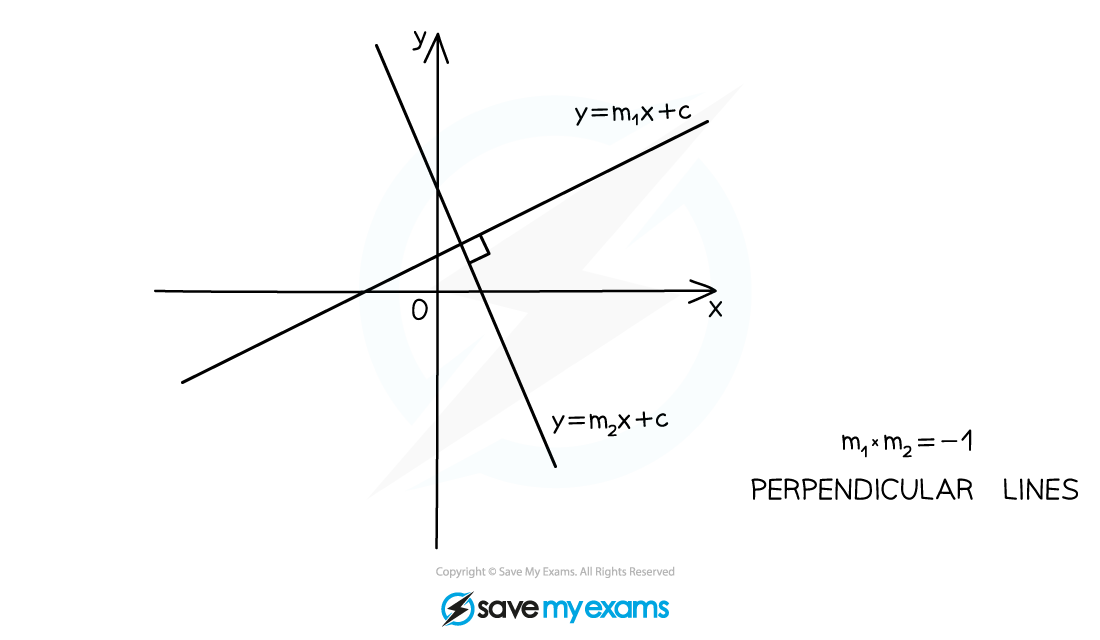Did this video help you?
Parallel & Perpendicular Lines (Cambridge O Level Additional Maths)
Revision Note
Parallel Lines
What are parallel lines?
- Parallel lines are always equidistant meaning they never intersect
- Parallel lines have the same gradient
- If the gradient of line l1 is m1 and gradient of line l2 is m2 then...
- If the gradient of line l1 is m1 and gradient of line l2 is m2 then...
- To determine if two lines are parallel:
- Rearrange into the gradient-intercept form
- Compare the coefficients of
- If they are equal then the lines are parallel
- Rearrange into the gradient-intercept form

Examiner Tip
- Look for hidden parallel lines in an exam question
- Parallel lines could be implied in an exam by phrases like “… at the same rate …”
- Check the properties of a geometrical shape
Worked example
Find the equation of the line that is parallel to and passes through (2,1).
As the gradient is the same, the line that is parallel will be in the form:
Substitute in the coordinate that the line passes through:
Simplify:
Subtract 6 from both sides:
Final answer:
Perpendicular Lines
What are perpendicular lines?
- Perpendicular lines intersect at right angles
- The gradients of two perpendicular lines are negative reciprocals
- If the gradient of line l1 is m1 and gradient of line l2 is m2 then...
- If the gradient of line l1 is m1 and gradient of line l2 is m2 then...
- To determine if two lines are perpendicular:
- Rearrange into the gradient-intercept form
- Compare the coefficients of
- If their product is -1 then they are perpendicular
- Rearrange into the gradient-intercept form
- Be careful with horizontal and vertical lines
and
are perpendicular where p and q are constants

Examiner Tip
- Exam questions are good at “hiding” perpendicular lines
- For example a tangent and a radius are perpendicular
Worked example
Find the equation of the line that is perpendicular to and passes through (2, -3).
Leave your answer in the form where
are integers.
L is in the form so we can see that its gradient is 2
Therefore the gradient of the line perpendicular to L will be the negative reciprocal of 2
Now we need to find for the line we're after
Do this by substituting the point into the equation
and solving for
Now we know the line we want is
But this is not in the form asked for in the question. So rearrange into the form where
,
and
are integers
Write the final answer

You've read 0 of your 5 free revision notes this week
Sign up now. It’s free!
Did this page help you?
